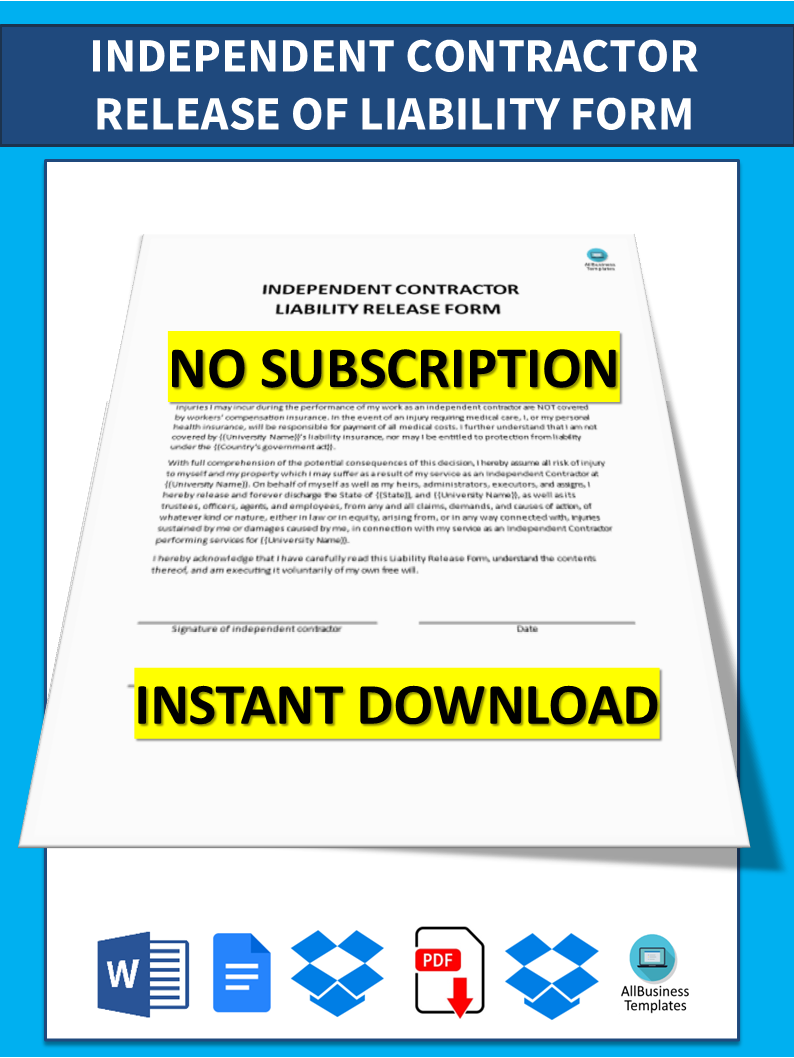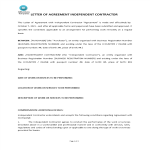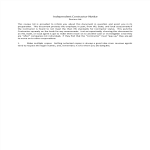Independent Contractor Release Of Liability Form
Sponsored Link免费模板 保存,填空,打印,三步搞定!

Download Independent Contractor Release Of Liability Form
微软的词 (.docx)免费文件转换
- 本文档已通过专业认证
- 100%可定制
- 这是一个数字下载 (28.64 kB)
- 语: English
Sponsored Link
How to draft an independent contractor release of liability form? How does a liability release form work? You can download a sample release form template from our platform. This template is legally binding and can be used by independent contractors to protect themselves from liability. It is easy to use and customize to fit your needs.
A waiver of liability for independent contractors is a key legal paper drawn up by corporations or private people employing independent contractors. This document aims at freeing the hiring entity (business or individual) from in the course of any specified work carried out by the contractor, any claims or liabilities. This is often aimed at minimizing the risks associated with the hiring party and their liability for possible litigations and compensations as a result of the contractor’s actions or actions during work.
Standard terms one would see in a release of liability form for independent contractors include:
- Parties: Any name and contact information about the two parties to contact the hiring party whether business or individual and the independent contractor.
- Release of Liability: Statement whereby the independent contractor recognizes the inherent difficulties of his work and agrees to assume all responsibility for any injuries, damages, or losses to the hiring party arising out of the contractor’s work.
- Scope of Work: The specification of the performance/ service that the independent contractor is engaged to deliver.
- Insurance: A provision addressing whether the independent contractor is to provide professional indemnity insurance and or any other insurance as a prerequisite for the agreement.
- Indemnification: A provision stating whether the independent contractor will be responsible for holding the hiring party and its officers, directors, and employees harmless from any lawsuit or claim targeted at the contractor’s work.
- Compliance with Laws: Assertion which dictates that the independent contractor shall be the one responsible for making sure that all laws, rules, regulations, and safety measures are adhered to in the course of conducting their job.
- Termination: A description of situations when it is necessary to cease the contract as well as the steps and expiration of notice required.
- Confidentiality: Scope of provisions relating to the confinement of third-party confidential or proprietary information relevant to the task at hand, where applicable.
Governing Law: Clause dealing with the applicable law in case of disputes.
Signatures: Independent contractor and hiring party’s signatures and the date when the contract was entered.
In many cases, prone to risk at work, especially in work such as construction, maintenance, or any other physical activity, an independent contractor release of liability form is commonly employed when people are made independent contractors. By completing the form, the independent contractor accepts the nature and risks involved in the job and promises not to sue the entity that hired them for any injuries sustained or property damaged in the course of doing the job.
Download this independent contractor release of liability form template, for ease of use!
DISCLAIMER
Nothing on this site shall be considered legal advice and no attorney-client relationship is established.
发表评论。 如果您有任何问题或意见,请随时在下面发布
相关文件
Sponsored Link




